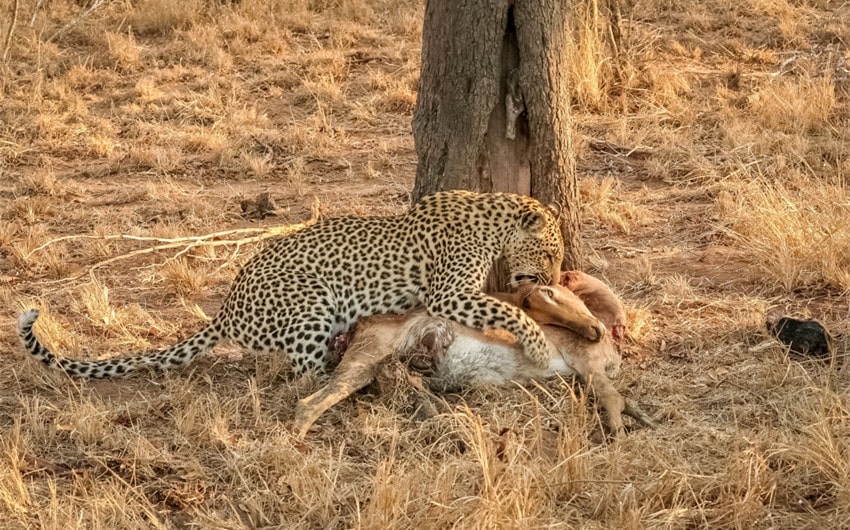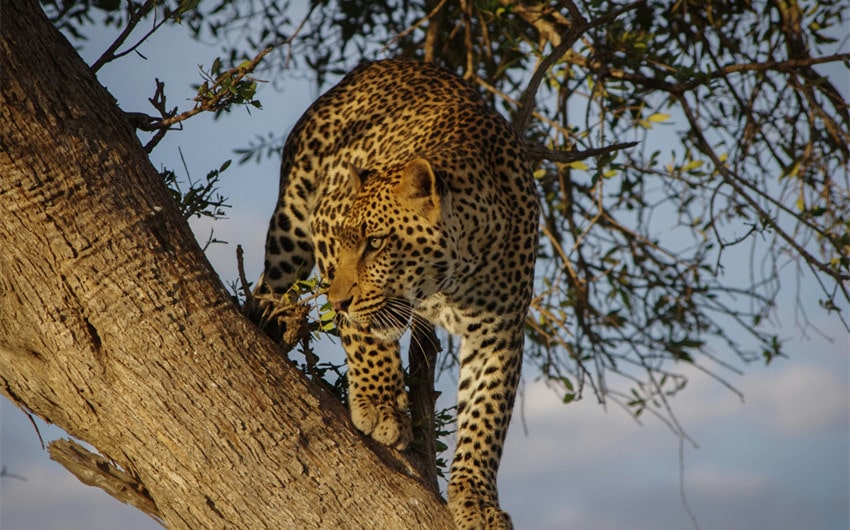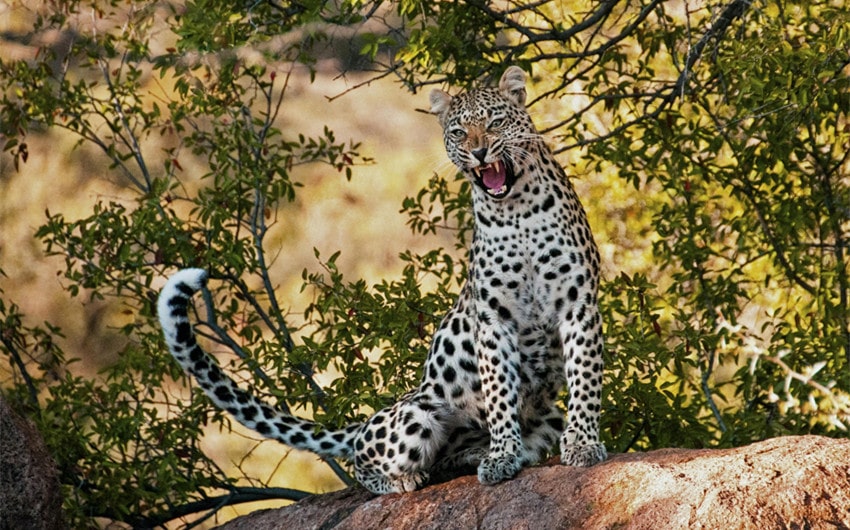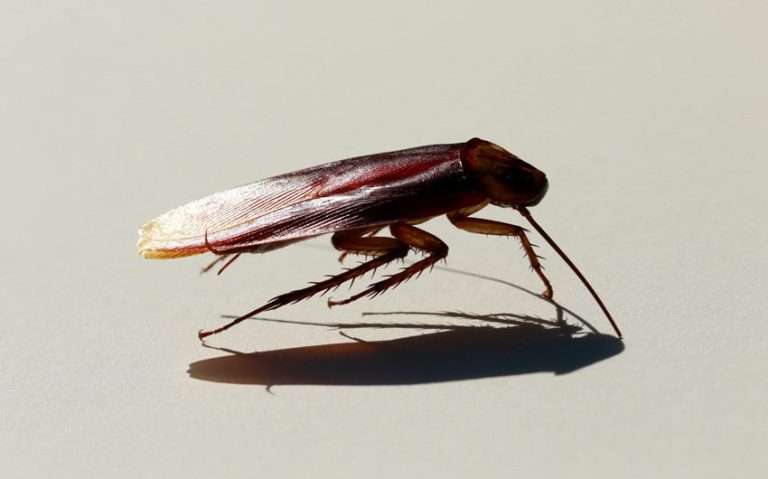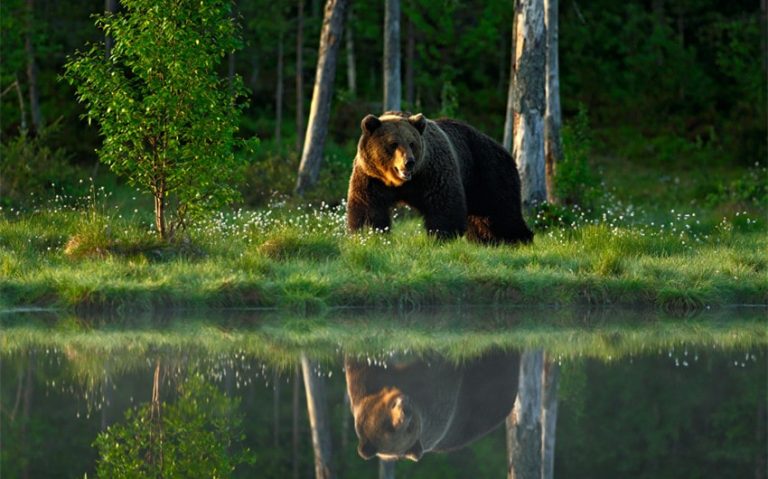Science Behind Leopard Bite Force and Its Hunting Efficiency
When you think of the power behind a predator’s hunt, the first thing that often comes to mind is its bite. Among the big cats, the leopard is no exception. Known for its agility and stealth, this feline also boasts impressive strength, particularly in its jaw.
The leopard’s ability to bite through tough prey is essential for survival in the wild, and understanding its bite force offers insight into the animal’s hunting and survival strategies. In this article, we’ll take a closer look at what makes the leopard’s bite so powerful and how it contributes to its success as a predator.
Understanding Leopard Bite Force
Leopard bite force is a critical component of the animal’s predatory toolkit. This force is measured in pounds per square inch (PSI), and the leopard’s bite is impressively strong, though it’s not as powerful as some of the larger big cats like tigers or lions. On average, a leopard’s bite force can reach around 310 PSI. While this might seem less than the tiger’s bite force of over 1,000 PSI, it’s more than enough for the leopard to subdue and kill its prey.
Anatomy of a Leopard’s Bite
To understand how the leopard generates this power, it’s essential to look at its jaw and teeth structure. Leopards have sharp, elongated canine teeth, designed for piercing and holding onto prey.
These teeth, combined with the strength of their jaw muscles, enable them to clamp down with remarkable force. The jaw’s ability to close rapidly, coupled with strong muscles, gives the leopard the power it needs to immobilize prey quickly.
Bite Force Comparison
In comparison with other big cats, the leopard’s bite force is moderate. For example:
- Lion: A lion’s bite force is about 650 PSI.
- Tiger: The tiger has one of the strongest bites among big cats, capable of delivering around 1,000 PSI.
- Jaguar: The jaguar’s bite force is notably stronger than a leopard’s, reaching over 1,500 PSI, which helps them crush the skulls or shells of their prey.
However, despite not having the most powerful bite among big cats, the leopard’s bite force is still significant for its size and hunting style. Leopards often hunt alone and rely on their stealth and speed to get close to their prey before delivering a fatal bite. This makes the leopard’s bite force an essential tool in its survival, allowing it to tackle a wide variety of prey, from small antelopes to larger herbivores like wildebeest.
The Role of Bite Force in a Leopard’s Hunting Strategy
The specialty of a leopard’s bite force lies in its precision, mechanical efficiency, and adaptive function, which are finely tuned to its ecological niche as an ambush predator. While not as powerful as those of larger big cats, the leopard’s bite force is highly effective for its hunting and survival strategies. Here’s a breakdown of its specialized features:
1. Precision in Targeting Vital Structures
Unlike larger big cats that often rely on brute force, a leopard’s bite is highly precise, allowing it to target specific areas that lead to quick immobilization or death.
The leopard typically strikes for vital structures such as the jugular vein, trachea, or cervical spine. This localized force can sever the carotid artery or disrupt the spinal cord, causing immediate hemorrhagic shock or neurological failure, which immobilizes the prey quickly.
2. Efficient Use of Force
A leopard’s bite force, while strong (around 310 PSI), is adapted for mechanical efficiency rather than overwhelming strength. The strength of the bite is concentrated in the sharp carnassial teeth and elongated canines, which have evolved to pierce and grip rather than crush.
This allows the leopard to dispatch prey with minimal effort while conserving energy for other tasks, such as climbing or retreating with its kill.
3. Adaptive to Various Prey Sizes
The leopard’s bite force is adaptable, enabling it to hunt a broad range of prey. For smaller animals, the bite force is sufficient to puncture vital blood vessels or deliver a fatal bite to the brainstem.
For larger prey, like antelopes or young ungulates, the leopard uses its bite in combination with its ability to quickly secure the prey and prevent escape. The jaw musculature allows for rapid, forceful strikes that can break through tough hides or bones, even in larger animals.
4. Mechanical Advantage of Jaw Musculature
The leopard’s jaw musculature is designed for both power generation and fine motor control. The masseter muscles, which are involved in closing the jaw, provide the necessary torque to exert force, while the temporal muscles offer control for the precise application of that force.
This dual function allows the leopard to apply high pressure when needed and modulate the force depending on the size and resistance of the prey.
5. Defense and Territoriality
In addition to hunting, the leopard’s bite force plays a crucial role in territorial defense and intraspecific competition. During confrontations with other leopards or predators, the leopard may use its bite to inflict injury, discourage rivals, or defend its kill.
The bite’s precision allows the leopard to target critical areas like the eyes or throat during aggressive encounters, increasing its chances of winning territorial disputes.

